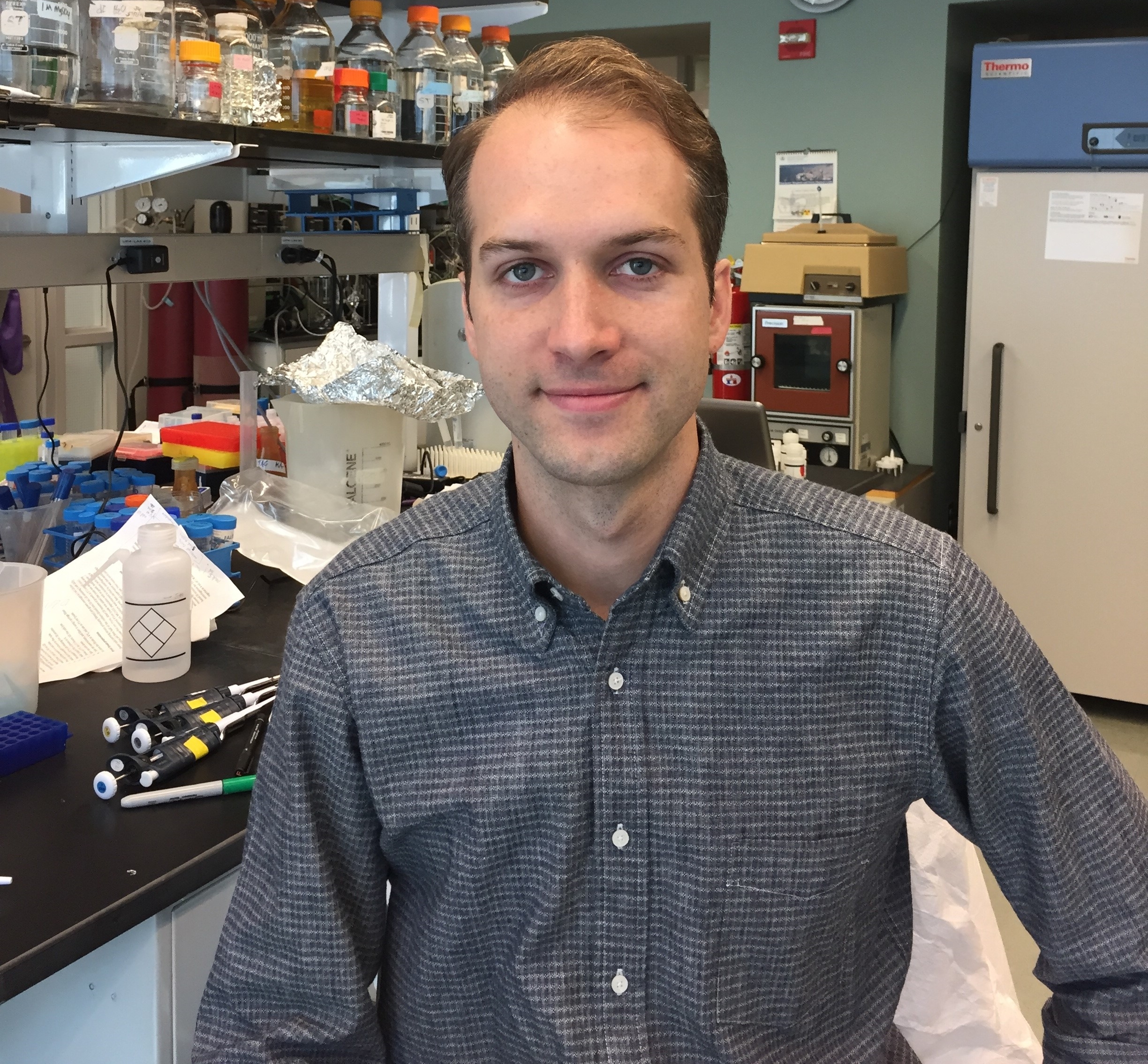Creative Minds: Searching for Solutions to Chronic Infection
Posted on by Dr. Francis Collins
If you or a loved one has ever struggled with a bacterial infection that seemed to have gone away with antibiotic treatment, but then came back again, you’ll probably be interested to learn about the work of Kyle Allison. What sometimes happens when a person has an infection—for instance, a staph infection of the skin—is that antibiotics kill off the vast majority of bacteria, but a small fraction remain alive. After antibiotic treatment ends, those lurking bacterial “persisters” begin to multiply, and the person develops a chronic infection that may be very difficult and costly to eliminate.
Unlike antibiotic-resistant superbugs, bacterial persisters don’t possess any specific genetic mutations that protect them against the killing power of one particular medication or another. Rather, the survival of these bacteria depends upon their ability to enter a dormant state that allows them to hang on in the face of antibiotic treatment. It isn’t clear exactly how the bugs do it, and that’s where Kyle’s work comes in.
One of 17 young scientists to receive a 2014 NIH Director’s Early Independence Award, this systems biology fellow at New York’s Columbia University is using his award to explore the problem of bacterial persistence in greater detail. The first step for Kyle is to develop reliable methods for isolating bacteria that have entered a persistent state. That’s no simple task, because bacterial persisters and their non-persistent kin appear to be genetically identical. He also needs to develop a way of studying persisters in the lab, without activating them—a vital tool for figuring out what sets them apart from their non-persistent counterparts at the molecular level.
The challenges associated with studying bacterial persistence aren’t new to Kyle. As a graduate student at Boston University, he conducted experiments that found when persistent Escherichia coli and Staphylococcus aureus were grown in lab dishes, the bacteria could be defeated with an antibiotic by simply adding sugar to the mix [1]. It seems the sugar roused the dormant bacteria, allowing the antibiotic to infiltrate and kill them. For this work, Kyle was recognized as one of Forbes Magazine’s 30 Under 30 in 2011.
As Kyle continues along the bacterial persistence pathway, his studies promise to provide deeper insights into the nature of this complex biomedical problem. The hope is that such findings will not only accelerate the development of new bacteria-fighting therapies, but will also lead to innovative strategies for using existing antibiotics in more effective ways.
Reference:
[1] Metabolite-enabled eradication of bacterial persisters by aminoglycosides. Allison KR, Brynildsen MP, Collins JJ. Nature. 2011 May 12;473(7346):216-20.
Links:
Allison Lab (Columbia University, New York)
Allison NIH Project Information (NIH RePORTER)
NIH Early Independence Award Program (Common Fund)
NIH Support: Common Fund


Great work. I have long been an advocate for finding ways to unlink stress responses to antibiotic treatment. There is literature on increased antibiotic sensitivity of “relA” mutants (JOURNAL OF BACTERIOLOGY, Apr. 2009, p. 2248–2256). This approach is very encouraging and could have broad general utility.
This is an important issue to raise and applaud those who suffered and still are suffering. A salute from us to those who are still looking for the solution to eradicate this infection!
I had staph for almost 2 years in my arms and legs. Small red bumps were everywhere. I was so embarrassed. I tried everything to get rid if it, all the home remedies and some of my own. Soaking my arms in baking soda, bleach bathes, salt baths, applying compounds directly to my skin, everything. One day I decided to experiment with tree tea oil and dishsoap. Every day I applied tea tree oil about twice a day, it burns like heck for the first 5 minutes and then throughout the day I would wash my arms with Ajax dish soap. Always after the tea tree oul I would see the redness and swelling going down and weekly some of my bumps slowly begin disappearing, after doing this regiment for about 2 months, ir must of dried out the bacteria because finallt I was staph free. Its taken awhile but the scara on my arms have begun to heals , i can barely see the circles now. I hope that you will find some time to experent with tea tree oil. It worked for me.